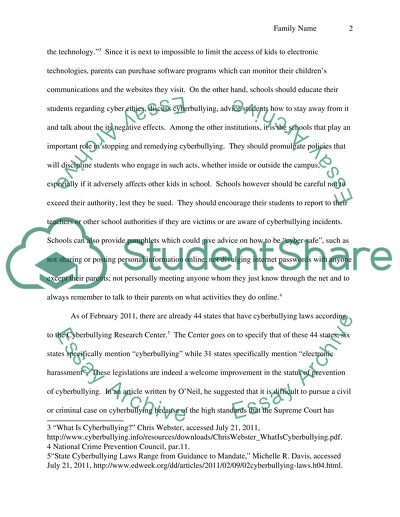Cite this document
(“Cyberbullying Essay Example | Topics and Well Written Essays - 750 words”, n.d.)
Retrieved from https://studentshare.org/information-technology/1428873-cyberbullies
Retrieved from https://studentshare.org/information-technology/1428873-cyberbullies
(Cyberbullying Essay Example | Topics and Well Written Essays - 750 Words)
https://studentshare.org/information-technology/1428873-cyberbullies.
https://studentshare.org/information-technology/1428873-cyberbullies.
“Cyberbullying Essay Example | Topics and Well Written Essays - 750 Words”, n.d. https://studentshare.org/information-technology/1428873-cyberbullies.


